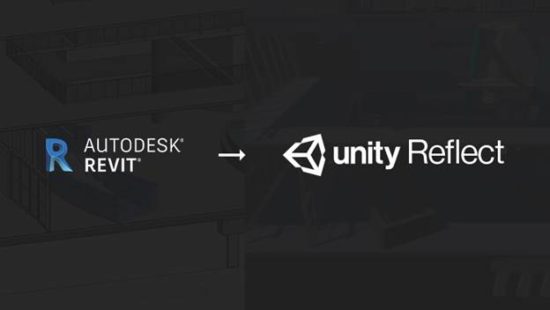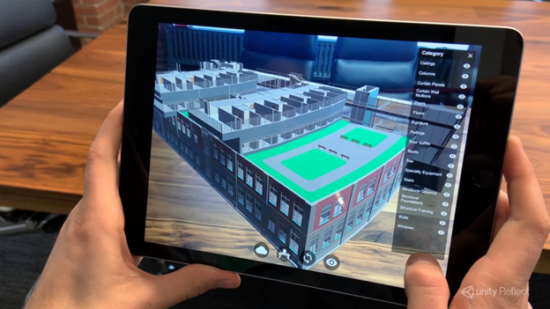
Unity has been promising the arrival of its Reflect platform for AEC visualization for several months. The game engine company and Autodesk had announced plans to collaborate in a marriage of game engine technology and BIM in 2017. The deal was made manifest in June at the AIA conference in Las Vegas with demonstrations of Unity’s Reflect plugin. The plugin started shipping in October.
Unity Reflect works with multiple formats in the CAD and BIM industry to enable people working in the AEC industry to put together visualizations, walkthroughs, renderings, and maintain data links.
The headline feature, at least for now, is Reflect’s ability to work with Autodesk’s BIM application Revit and maintain a live-link relationship. The native integration of Revit and Unity means design changes are sync’d across 3D platforms including mobile, desktop, VR, and AR.
The Revit/Reflect plugin is built on a federated framework, which brings together data from different apps into a central view, and is rendered in the Unity engine. So in the case of Unity Reflect, data from multiple designers and engineers can collaborate on one BIM model.
People can work together on multiple platforms including iOS, Android, Mac, PC, AR/VR, and more. They can work concurrently, with changes being updated.

Unity says it is developing APIs for other design applications to work with Reflect and the PiXYZ plugin for Unity was announced in January 2019. As an example, PiXYZ Studio is a data preparation tool with built-in tessellation to enable transfer of CAD data from applications like Catia, NX, SolidWorks, as lightweight meshes. PiXYZ has an embedded Python interface, giving users the ability to create scripts to automate data preparation and batch process.
The latest PiXYZ updates its Revit support to include Revit 2019, has support for Autodesk’s visualization and rendering tool VRED, and supports polylines enabling 2D content such as drawings, laser marking data, line drawings, to be imported into Unity.
What do we think?
The Epic and Unity are determined to have a play in the CAD market with their game engines. Their latest tools, which maintain the relationships in CAD data, are giving users options. Rendering is the feature that’s helping drive experimentation for CAD users. The ability to create applications like walkthroughs and demonstrations is making the sometimes difficult marriage between CAD technology and game development interesting. Unity’s latest tools have the advantage of being tailored for Autodesk, which makes life easier for those users.
As we’ve mentioned, CAD is a thriving field for XR development, Unity Reflect keeps the ball rolling.





